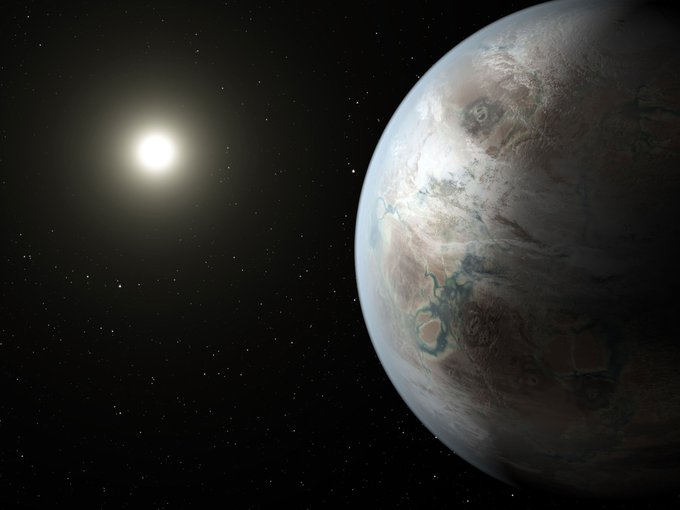
Nov. 17, 2017
Research Highlight
Modelling the Modern and Archean Solar System in the Hunt for Exoplanets

An artist's conception of planet Kepler-452b, the first near-Earth-sized world to be found in the habitable zone of a star that is similar to our sun.Image credit: NASA Ames/JPL-Caltech/T. Pyle.
Researchers have developed two state-of-the-art models of the Solar System, one corresponding to the present day and one to the Archean Eon 3.5 billion years ago. The models will help scientists simulate how direct observations of exoplanetary systems will be undertaken in the future. Ultimately, the work will inform the development of technologies and methods to search for Earth-like planets around distant stars.
The study, “Finding the Needles in the Haystacks: High-fidelity Models of the Modern and Archean Solar System for Simulating Exoplanet Observations,” was published in the Publications of the Astronomical Society of the Pacific. The work was supported by the Nexus for Exoplanet System Science (NExSS). NExSS is a NASA research coordination network supported in part by the NASA Astrobiology Program. This program element is shared between NASA’s Planetary Science Division (PSD) and the Astrophysics Division.